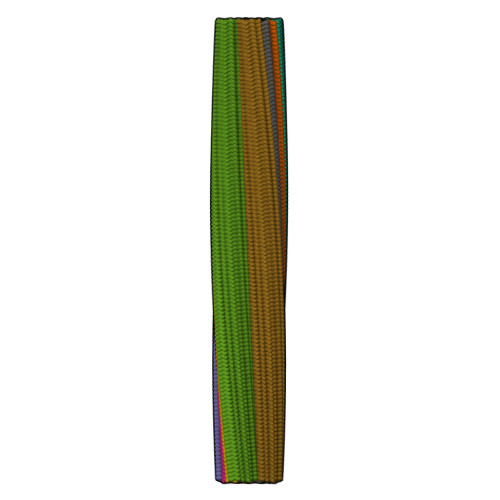Atomic structure and hierarchical assembly of a cross-beta amyloid fibril.
Fitzpatrick, A.W., Debelouchina, G.T., Bayro, M.J., Clare, D.K., Caporini, M.A., Bajaj, V.S., Jaroniec, C.P., Wang, L., Ladizhansky, V., Muller, S.A., MacPhee, C.E., Waudby, C.A., Mott, H.R., De Simone, A., Knowles, T.P., Saibil, H.R., Vendruscolo, M., Orlova, E.V., Griffin, R.G., Dobson, C.M.(2013) Proc Natl Acad Sci U S A 110: 5468-5473
- PubMed: 23513222
- DOI: https://doi.org/10.1073/pnas.1219476110
- Primary Citation of Related Structures:
2M5K, 2M5M, 2M5N, 3ZPK - PubMed Abstract:
The cross-β amyloid form of peptides and proteins represents an archetypal and widely accessible structure consisting of ordered arrays of β-sheet filaments. These complex aggregates have remarkable chemical and physical properties, and the conversion of normally soluble functional forms of proteins into amyloid structures is linked to many debilitating human diseases, including several common forms of age-related dementia. Despite their importance, however, cross-β amyloid fibrils have proved to be recalcitrant to detailed structural analysis. By combining structural constraints from a series of experimental techniques spanning five orders of magnitude in length scale--including magic angle spinning nuclear magnetic resonance spectroscopy, X-ray fiber diffraction, cryoelectron microscopy, scanning transmission electron microscopy, and atomic force microscopy--we report the atomic-resolution (0.5 Å) structures of three amyloid polymorphs formed by an 11-residue peptide. These structures reveal the details of the packing interactions by which the constituent β-strands are assembled hierarchically into protofilaments, filaments, and mature fibrils.
Organizational Affiliation:
Department of Chemistry, University of Cambridge, Cambridge CB2 1EW, United Kingdom.
















